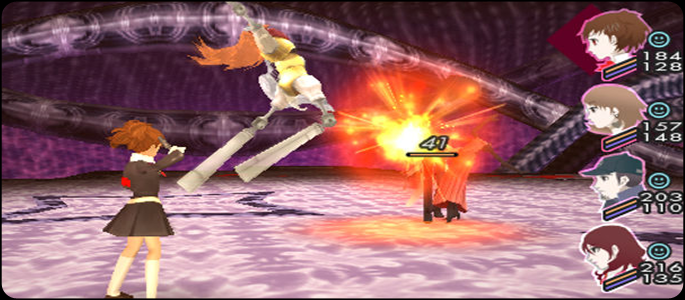
When Shin Megami Tensei: Persona 3 launched in North America in the summer of 2007, many members of the gaming community didn’t quite know what to expect. It had been seven years since North America had gotten a new Persona game, way back on the PS1, and the RPG franchise had barely held cult status to begin with. Furthermore, P3 was released on the PS2, a last-gen system. How could it possibly be expected to compete with the likes of the other big games of 2007?
Flash forward nearly three years, and Persona 3 is one of the most beloved and critically acclaimed role-playing games of this generation, expanding the series’ formerly small fanbase. The game’s success awarded Atlus the ability to release Persona 3 FES the following year, and was once again met with high review scores from gaming critics. Now Atlus is doing it once more, only this time, Persona 3 is coming to the PSP. This is no mere cash-in, however; while Persona 3 Portable will have the full campaign from the original release of Persona 3, there are also more than enough changes to justify its existence.
The biggest addition is obvious from the start, and should come as no surprise to anyone who has been following the development of P3P: the female protagonist. For those unfamiliar with the Persona series, each game follows a silent protagonist given a name by the player, and the original lead of P3 was male. The male character is still playable, and recommended for those experience the game for the first time, but the female lead does more than add some estrogen to the gameplay—it changes many of the interactions and relationships within the story, opening up new Social Links and female-centric activities.

In Persona 3, the protagonist is part of a group of high school students tasked with defeating demons known as Shadows during the Dark Hour, or a period of time between midnight and 12:01 a.m. that very few people are able to recognize. The Shadows are fought with the help of Personas, extensions of the personality that can be summoned by this particular group. Friendships and relationships forged during the day build up Social Links, which add experience when forging new Personas. In P3, the male lead could date several female characters, including a few of his fellow Persona users, and through these Social Links, these characters’ backstories were revealed. This time around, as the female, players can get to know the male Persona users a little better, as well as interacting with other new characters at school and around town.
Some of the other big changes aren’t as welcome to P3P, but they’re certainly understandable. The enjoyable anime-style cut scenes from the PS2 version have been removed, which was explained by Atlus as a necessity in order to fit two full campaigns onto the UMD. Furthermore, instead of manually walking from place to place, players can move around school and town by bringing up the map with the square button, and people and objects that can be interacted with are marked on the screen and can be selected with the touch of a button. This is definitely a little jarring at first, but it’s not particularly hard to get used to. Admittedly, these changes streamline the game for a handheld system, allowing the players to get to the action much more quickly.
Within the first few hours, Persona 3 veterans will notice dozens of changes. Some are tiny, such as a shift in Yukari’s dialogue as she reacts to the main character as a female contemporary and not a possible love interest, but they show the attention to detail that went into making Persona 3 Portable. This isn’t just a simple port, or the average re-release; it just might be the definitive version of the game.
Persona 3 Portable will be released on July 6th, 2010 exclusively for the PSP.








